The soil in which you put your succulent is probably the most important decision you'll make regarding that fat plant.Without the right type of potting mix, your succulents are at risk of developing deadly root rot, so choose your soil wisely!
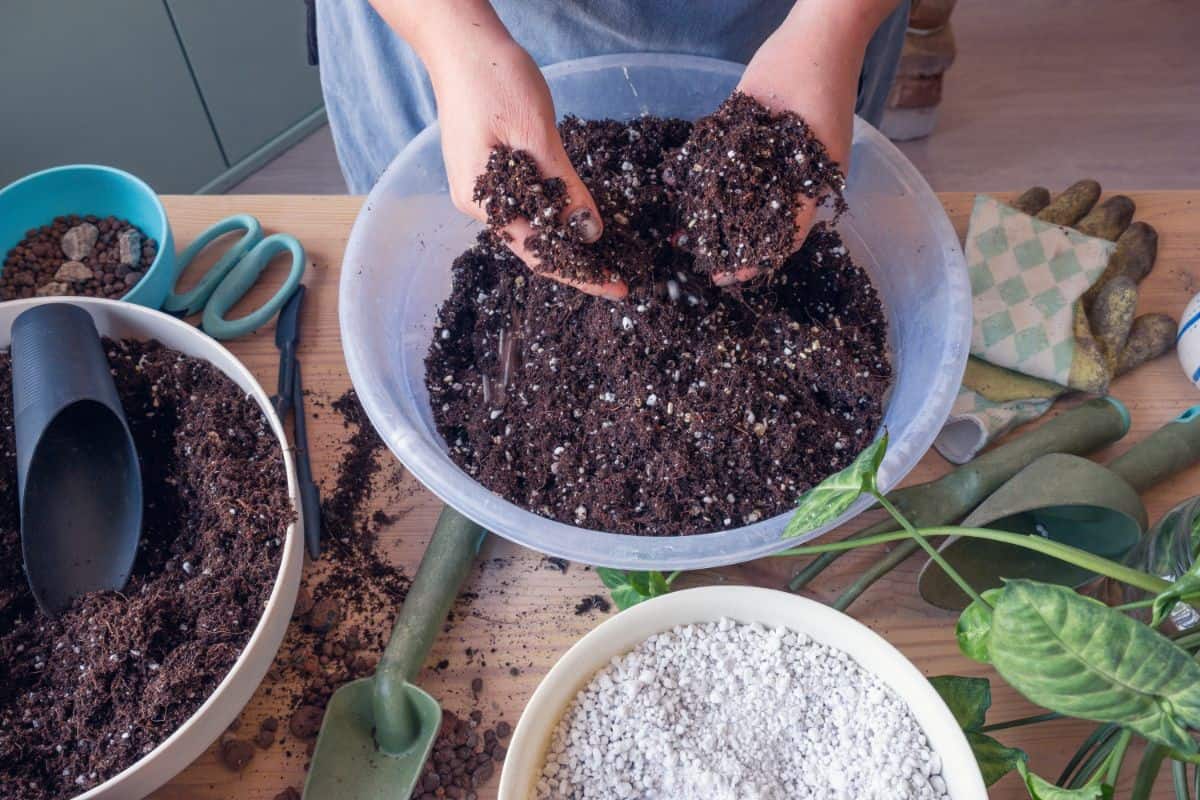
If you haven’t yet chosen the perfect soil for your plants or are nervous about making the right choice, don’t worry! We’ve got all the information you need to make informed decisions about what type of soil is best for your succulents and cacti.
Jump to:
- Wait, I need special soil for my succulents?
- What exactly is soil?
- So, what soil is best for succulents?
- OK, I dug up some dirt from my backyard...
- So where do I get this "loamy sand"?
- What about grit?
- Why do we need quick-draining soilanyway?
- What about peat moss?
- Can I just... make this special dirt?
- What about planting succulents outside?
- Do I need to sterilize my soil?
Wait, I need special soil for my succulents?
Indeed you do! Most succulents are adapted to very dry environments that receive little water. The soils that they naturally grow in are also unaccustomed to holding water - the water drains through them very quickly.
Think of the types of soil you see in the climates preferred by succulents and cacti. Most are arid environments like deserts and xeric shrublands. Not much moisture there, right?
What exactly is soil?
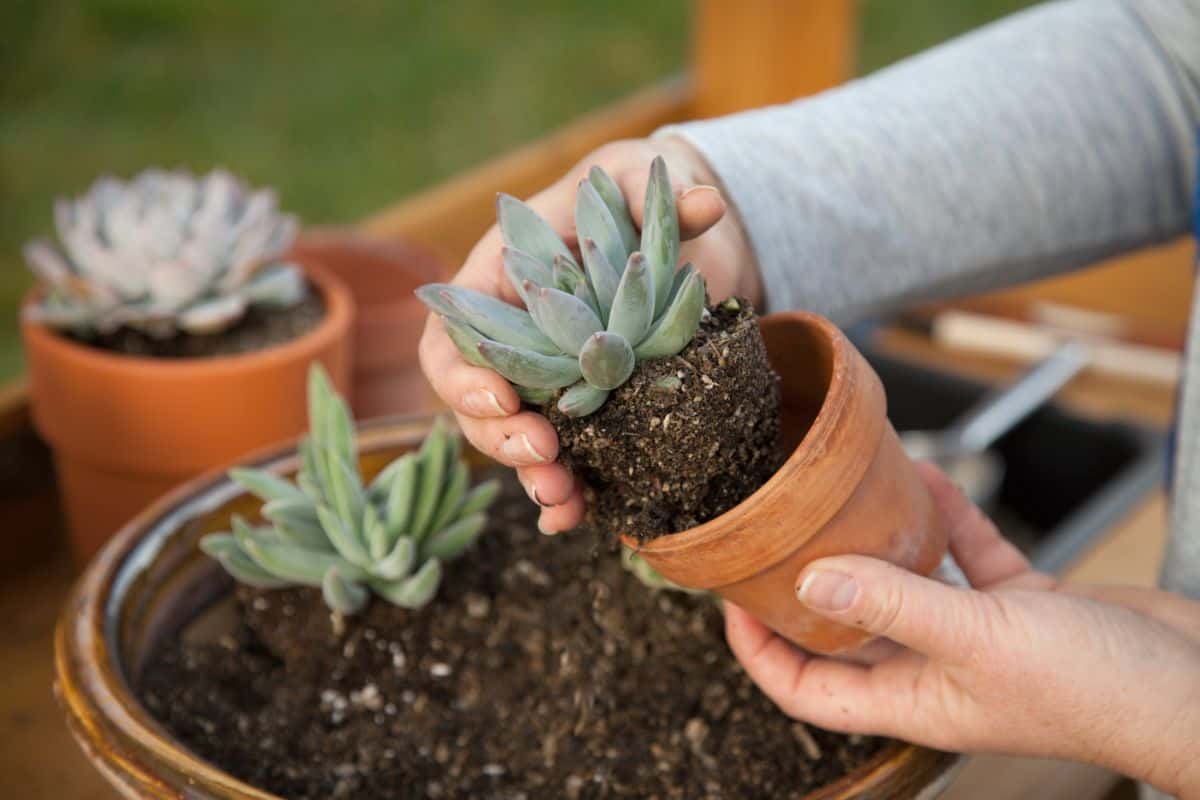
Simply put, the soil is a natural medium for plant growth that consists of a combination of mineral and organic materials. Soil is comprised of five ingredients: organic matter, minerals, living organisms, water, and gas.
Those last three ingredients may be somewhat surprising if you’re unfamiliar with soil composition, but we’ll break it down for you. It’s worth noting that this applies to all types of soil, not just soil intended for use with succulents.
Minerals make up an important part of soil composition, but the exact minerals contained in the soil will vary based on location. The most common minerals in the soil are iron, calcium, sulfur, and magnesium.
Plants use these minerals for essential actions such as producing chlorophyll and building proteins. Minerals also make up the largest percentage of soil, typically between 40-45% depending on the mix.
It’s likely you’ve heard that soil contains organic matter and that this is where plants get their nutrients, but many gardeners aren’t quite sure what organic matter really is. You might sometimes see this organic matter referred to as humus.
In short, organic matter is a plant, animal, or even microbial material in different states of decomposition. This decaying matter is crucial for growing plants and is actually considered an indicator of soil quality in agriculture.
Living organisms such as mycorrhizal fungi are crucial to both the soil and the plants growing in it. These necessary fungi form symbiotic relationships that aid in root health and help not only succulents and cacti but many other types of plants as well, to thrive.
Soil is an incredibly biodiverse environment that’s filled with fungi, bacteria, and archaea. In fact, the biodiversity of soil is so vast that microbiologists have only touched the surface of the incredible array of living organisms that can be found in soil.
Water is an essential part of the soil as it is the primary way in which plants take up nutrients. The nutrients found in the soil are dissolved in water, which is then absorbed by the plant’s roots.
Without getting too deep into the science of water and soil, the relationship between the two goes beyond nourishing a simple succulent. Soil, water, and the plants that need them to grow are crucial in preventing erosion, which can destroy ecosystems if left unchecked.
The gases most commonly found in soil are oxygen and greenhouse gases. Through a process called gas regulation, the soil absorbs and releases gas into the atmosphere to help mediate their levels.
So, what soil is best for succulents?
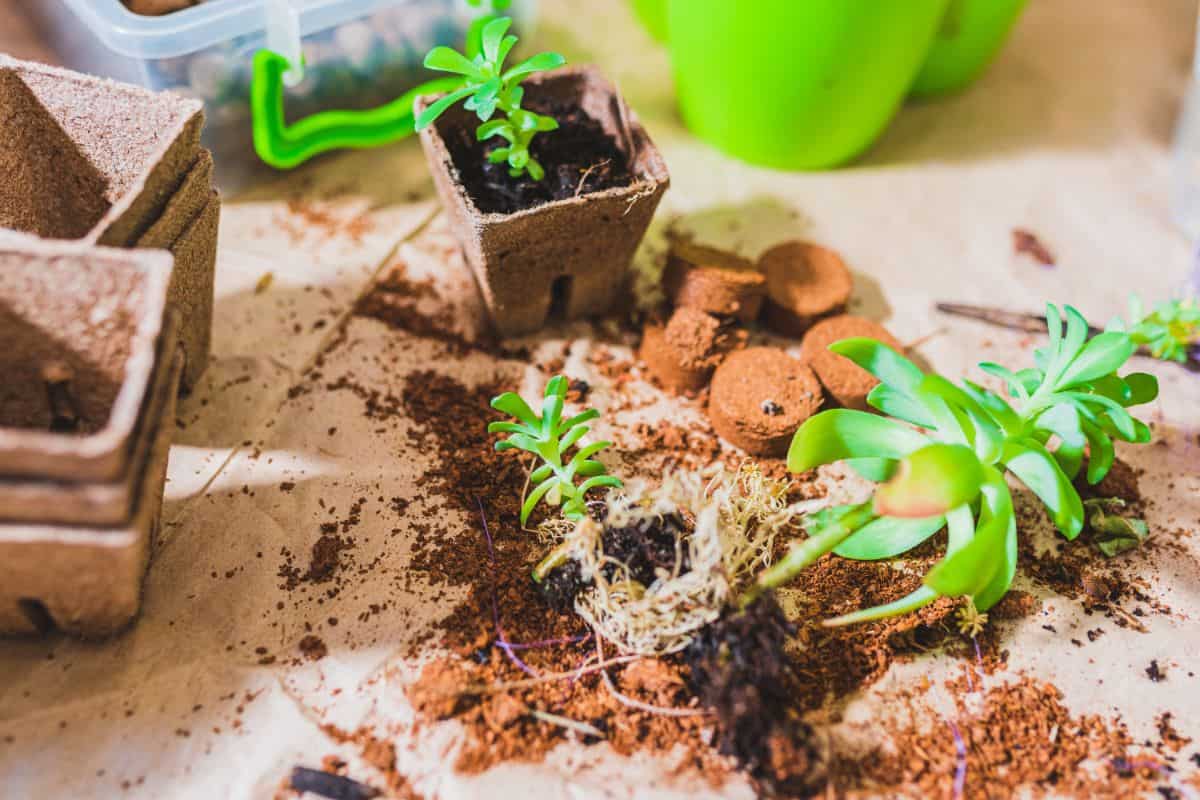
The fast-draining characteristic of good succulent soil has to do in large part with soil composition. The soil that succulents prefer has little clay (which holds water) and a lot of large particles like sand. Clay tends to retain water, so soils that are high in clay will not drain quickly enough for succulents and cacti.
Sand, on the other hand, retains very little water and allows for efficient drainage. Other types of fast-draining soil particles include gravel, bark, perlite, and pumice. Unfortunately, there isn’t much nutritional value to these types of material, so they’re best used when combined with other materials.
Of course, succulents need nutrients too so there has to be an organic component to the soil. Luckily, as a gardener, you are able to care for your plants in ways that simply wouldn’t be possible in nature. If your soil of choice is low in organic matter, you can always supplement your succulents’ nutrients with fertilizer.
No products found.
Additionally, it should not be dense soil. Aeration is important for the roots of all plants, and succulents are no exception! Succulent potting mixes with high clay content are not ideal in this respect either. Remember, soil needs to be able to absorb and release gases and oxygen is essential to good root health, so aeration is crucial!
Clay is incredibly dense and tends to pack tight enough to restrict airflow. The same is true for vermiculite. Instead, look for crumbly dirt with additives such as gravel, perlite, or bark to help prevent the soil from being tightly packed and allow airflow.
You’ll also want to avoid vermiculite, which is a naturally occurring mineral that looks like small, brown flakes. Though it’s sometimes confused with perlite it actually has properties similar to clay. Vermiculite absorbs and retains moisture and can be harmful to succulents if large quantities are found in the soil.
Soil will become more compact over time, so it’s helpful to start with good airflow. Choosing the right ingredients in your plants’ soil will help accomplish this goal. You should also avoid packing the soil down after planting your succulents and cacti.
Soil containing particles of ¼” or larger will allow for both drainage and airflow, so if your new soil looks a bit chunkier than the potting mix you use for your flower garden, you’re on the right track. If the soil seems overly soft and moist, keep looking.
OK, I dug up some dirt from my backyard...
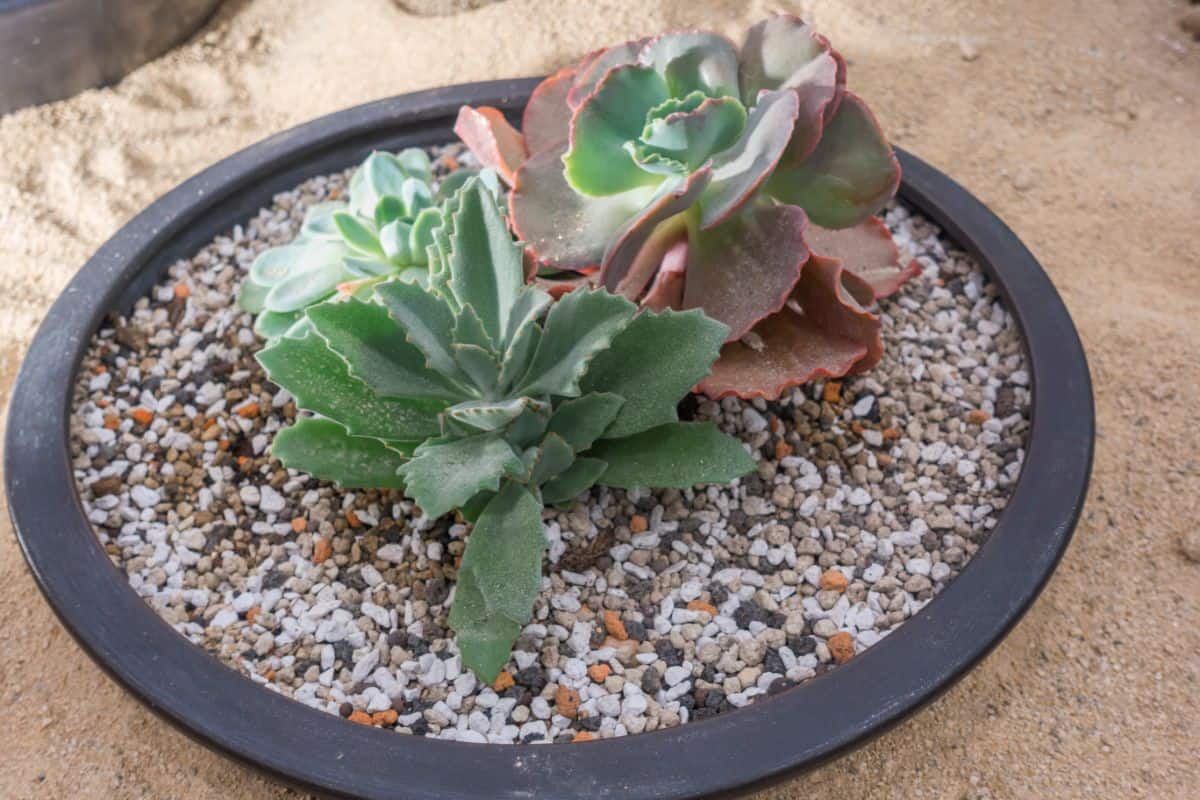
Nuh-uh. Put that back. Your crabgrass will be upset. Soil composition varies greatly among geographic locations. It turns out dirt isn’t always just dirt. As previously mentioned, the exact minerals, organic matter, and living organisms in the soil will vary from place to place.
If you live in an area that’s appropriate for succulent growth, such as the southwestern United States, you may be able to use it for growing succulents and cacti. However, in most cases, the dirt in your backyard will not be appropriate for use with drought-loving plants.
That diagram is used by soil scientists to define different kinds of dirt, but it's useful to us too!
Additionally, you may be exposing your succulents to bacteria or fungi they haven’t yet had a chance to build up an immunity to. Plants grown in greenhouses aren’t usually ready to live in the wild without an adjustment period anyway.
You may also be picking up pests in the dirt you collect from the outdoors. Harvesting your own soil might seem like a great idea until you have centipedes roaming your house.
Dirt is composed of three things: clay, silt, and sand. The percentages of each determine what kind of dirt it is. Most common plants prefer to hang out in the middle of that triangle near clay loam or medium loam. Succulents, however, are all about that bottom left side. Sandy loam and loamy sand are a good starting point for your average succulent.
For the record, loamy sand typically contains 70 to 90 percent coarse sand, up to 15 percent clay, and up to 30 percent silt. Sandy loam, on the other hand, contains less than 7 percent clay, less than 50 percent silt, and up to 52 percent sand. Furthermore, soils can be broken down in categories based on whether the sand is coarse or fine. For the succulent potting mix, coarser sand is typically better.
So where do I get this "loamy sand"?
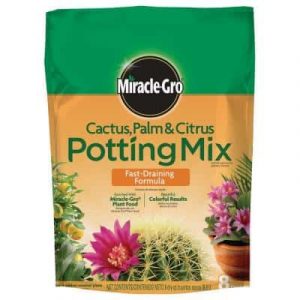
If you've been getting your succulents from the same place as the rest of us (let's be honest, it's probably Lowe's), you have no doubt seen large bags of soil for sale. If you looked closely, you probably even saw bags labeled specifically for cacti!
Yes, this is an appropriate medium for you to plant succulents in. Remember: there is no magic soil composition that will work for every succulent. Some species require specific soil in order to thrive.
Kalanchoe are an example of a species of succulent that prefer a bit more water than most. This doesn’t mean they can be planted in a normal potting mix, but it does mean that they might need more water retaining materials in their soil than other succulents or cacti.
Lithops, for example, needs soil that drains especially fast and contains relatively little organic matter. They grow well in gritty substrates that are low in water retaining materials. It’s important to research the specific species of plants you’re bringing into your home so that you can be sure to provide the right care.
Though it may be tempting to buy a bag of soil to bring home and plant all your succulents in, it may not be appropriate for each and every species in your collection.
Commercial cactus soil is a great start though. They are mixed specifically to include large particles like sands and perlite while minimizing water retaining components like clay. You will often find them advertising their potential to drain water rapidly.
However, if you aren’t making your own succulent soil mix, it can be difficult to know exactly what the soil’s composition is. The exact percentages of sand, clay, and silt are rarely labeled on the bag.
For full disclosure, this Miracle-Gro doescontain some peat moss. Peat moss is typically used to retain moisture in commercial potting mixes, but don’t let this scare you away. Is it necessary? No. Is it harmful? There's only a tiny bit, so no.
This cactus mix also makes a great starting point for coming up with your own blend. You can always buy it as a base and customize the blend according your plants’ unique needs.
What about grit?
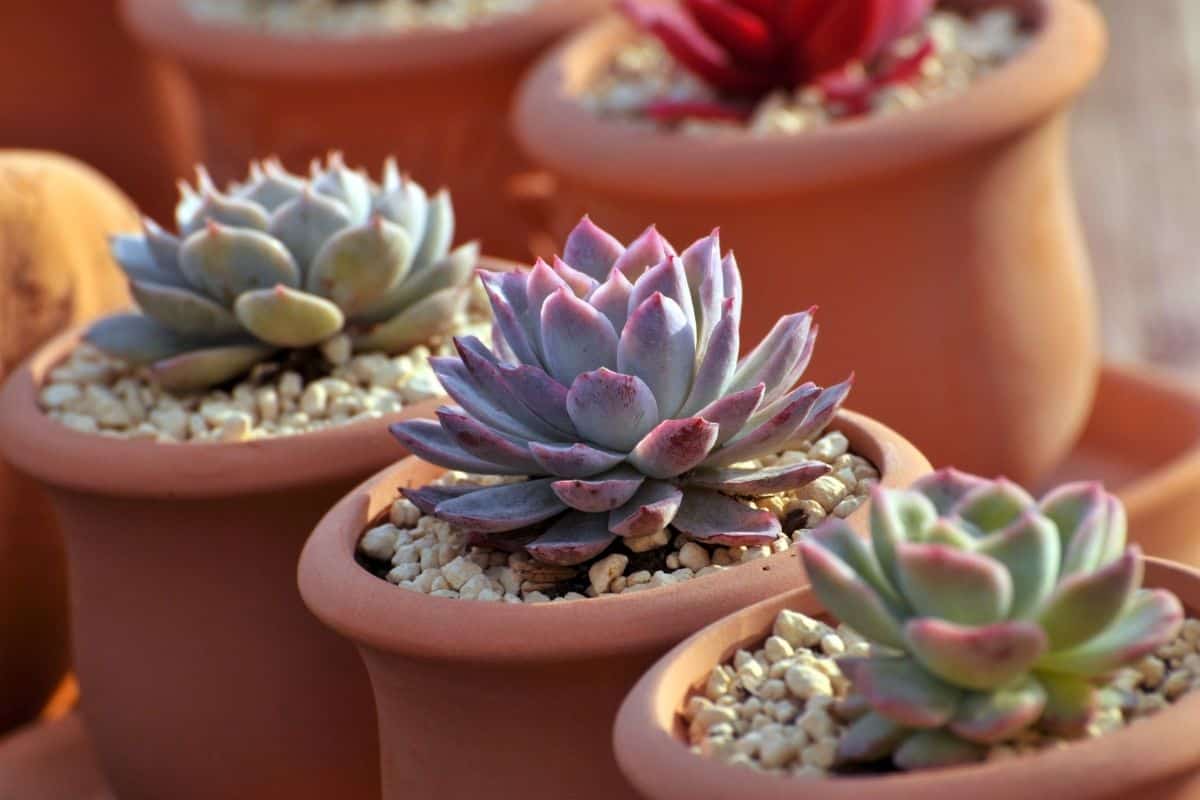
As you go shopping for succulent soil you might encounter bags of substrate labeled as grit or gritty mix. This is not to be confused with soil. The main difference between soil and grit is that grit has very little, if any organic matter.
Instead, grit contains ingredients such as granite, turface, expanded clay, chicken grit, pine bark, pumice, or perlite. You can buy each one separately or as a blend of several of these materials.
Grit and gritty mixes drain much faster than your average soil, including those formulated for use with succulents and cacti. With no organic material, there isn’t anything to absorb water, so it just goes straight through.
The large particles of gritty mix also mean that oxygen can flow freely between them, which also aids in drying out the material quickly.
While you can plant some species of succulents in gritty mix, you may need to make adjustments to make sure they receive enough nutrients. For succulents that prefer dryer substrates, gritty mix can be a lifesaver.
For succulents that prefer a bit more moisture, you might consider mixing grit or gritty mix into your cactus soil of choice. It can be a great method of adding more drainage and airflow to the average succulent potting mix.
Why do we need quick-draining soilanyway?
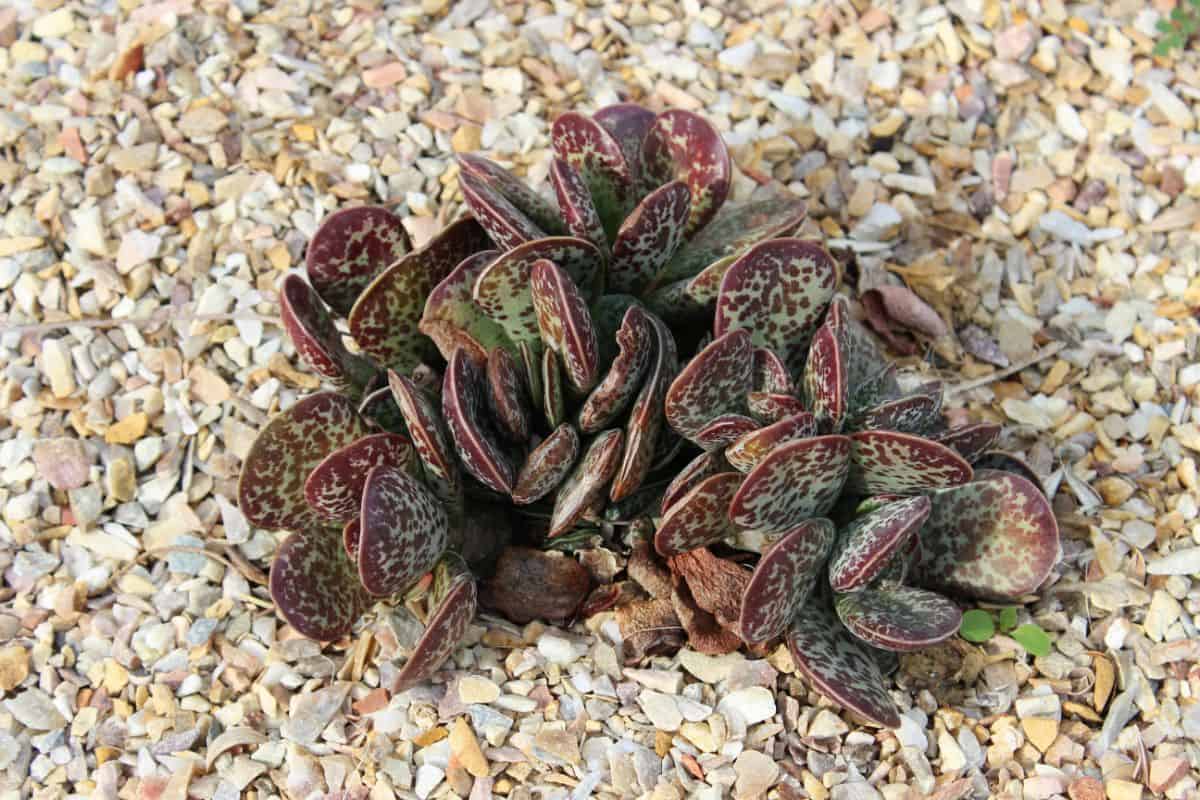
Succulents have a hard time dealing with wet roots. They do, of course, take up water from their roots but they absorb what they need rather quickly. You never know how long a rainstorm will last in the desert!
Plant roots are also designed to absorb oxygen (yes, plants need oxygen too!). The problem is: oxygen movesextremely slowly through the water. When the roots are wet (surrounded by water) they can't get any oxygen! As previously mentioned, dense or tightly packed soil also limits the potential for airflow around your succulents’ roots
Root rot is the main problem you face without adequately draining soil. If your succulents are left in standing water, or overly wet soil, for too long, the roots basically drown and begin to rot.
This rot can spread quickly and since it affects the parts of your plant that are below the soil line, you may not even realize it until it’s too late. Unless you happen to be repotting your plants and discover that the roots are black with rot, you probably won’t notice a problem until the rot moves up the stem.
Unfortunately, most cases of root rot are not noticed until the plant is beyond the point of being able to be saved. In very few cases can a plant be saved once the rot has moved up the stem. You might be able to behead the plant and save the top half, but there’s no guarantee.
Another issue fat plantshave is that they are pretty greedy. If there is water, they’re gonna try to drink it. If they drink too much the cells can swell and burst. If you’ve ever seen an overwatered succulent, you’ll recognize the telltale mushy, translucent leaves.
Quick-draining soil remedies all of these problems! It slows down water just enough so that the roots have time to take a sip, but they don't drown. That's also why it is imperative that you plant your succulents inpots that have drainage holes. It would be pointless to have all this luxurious soil if the water is just gonna stay in the bottom of the pot anyway!
Most people further recommend that you use unglazed terracotta pots, the reason being that they are less inclined to retain water than some other planters.
It’s worth noting that while it’s not impossible to grow succulents and cacti in pots without drainage holes, it isn’t recommended. You’ll need to make a variety of adjustments to your planting method to make up for the lack of drainage. It’s much easier to just choose a different pot.
However, there are many factors to consider when deciding what type of container to use. You can read more about that here. Regardless of what the container is made of, just make sure it has a drainage hole!
If you’re one of those gardeners that avoid using a pot with drainage because of the mess, you can always keep your succulents and cacti in a nursery pot placed in the drainage-free container. This way, you’ll be able to remove the plant if you accidentally give it too much water.
If you’re handy with power tools, you can also add drainage holes to any pot. A power drill outfitted with a ceramic drill bit is ideal for improving drainage in any pot. If you need more instruction on that, we can teach you how to drill drainage holes in terracotta and clay.
What about peat moss?
Peat moss seems to be an ever-present ingredient in potting soil mixes. Though it may be present in small amounts in soils intended for use with succulents and cacti, it’s not recommended in larger amounts because of its moisture retaining properties.
As we may have mentioned a few times before, succulents don’t enjoy long periods of excess moisture. That’s why peat moss makes a less than ideal ingredient in succulent and cactus soil.
However, there are times when a little moisture can be a good thing. Many nurseries use peat moss or peat moss alternatives in their soil mixes to help young succulents and cacti establish themselves in preparation for outdoor planting.
It can also be helpful in extremely hot environments where outdoor plants may dry out too quickly. When mixed into the soil, it can help retain moisture better than just soil alone.
The downside to peat moss is that it isn’t a particularly sustainable product. Peat moss is sourced from the sphagnum moss of wetlands and bogs. It takes hundreds or even thousands of years for that moss to decompose to make the product we know as peat moss. The destruction of those bogs has a major effect on the earth’s ability to absorb carbon dioxide from the air.
If you’d like to use peat moss in your soil mixtures, but would prefer not to contribute to climate change, consider using coconut coir as an alternative.
Coconut coir (pronounced like coyer) is a more sustainable alternative. The fibers of coconut coir are the byproduct of harvesting coconuts. Since coconuts grow faster than peat bogs decompose, there’s the less environmental impact. It’s also making use of what is basically a waste product.
As with every other aspect of soil, coconut coir and peat moss are not ideal for every situation. You’ll need to assess your own individual situation and the species of succulents and cacti in your collection to determine if these ingredients are right for you.
Can I just... make this special dirt?
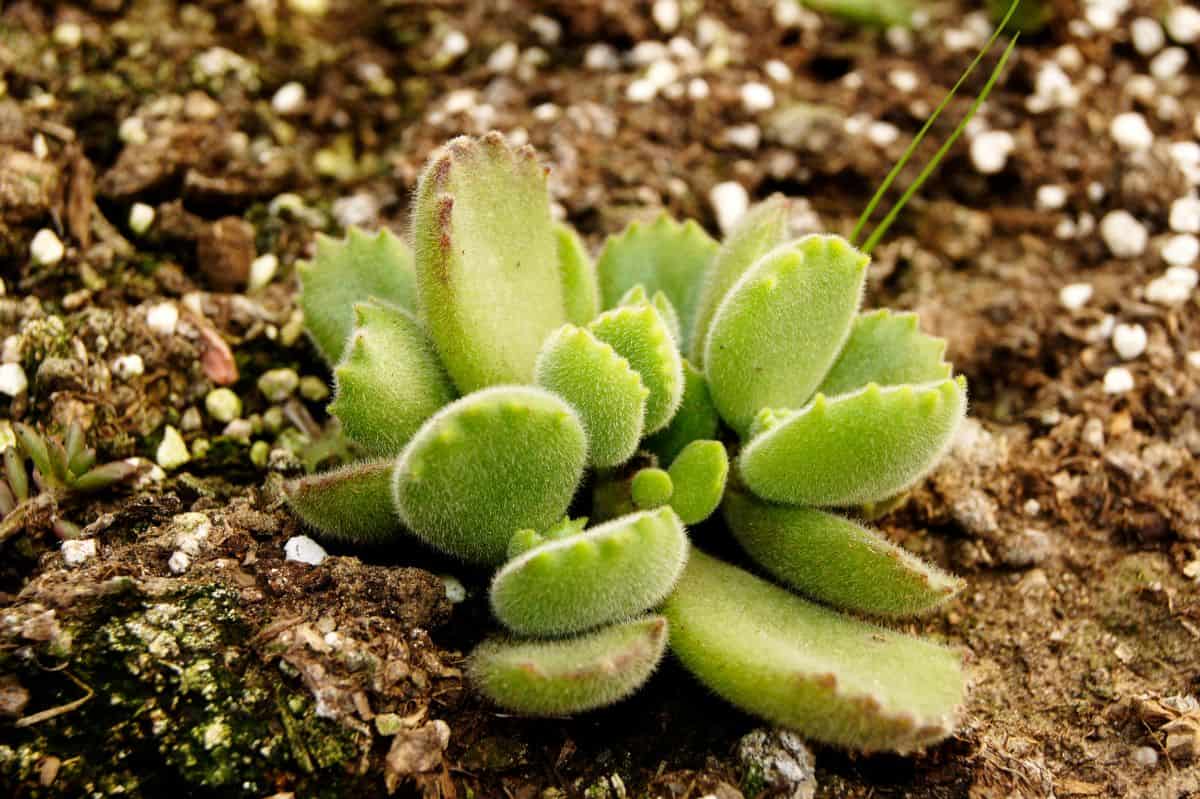
I'm glad you asked! You absolutely can!
Everybody who makes succulent potting soil does it differently. There are a few things they all have in common though.
- organic soil - I don't mean free-range soil. I mean soil thatis primarily organic matter - things like decomposed plants and bark. This is the basis of your dirt and will provide the nutrients for your plant. Many gardeners just use your average, run of the mill potting soil. It makes an excellent base that can be modified as needed, depending on your plant’s needs.
- perlite - Those little white balls you see in potting soils. It turns out they are a kind of volcanic glass! They're very porous so they don't retain water for long. Their shape also promotes aeration in the soil, which is their primary purpose. They are incredibly lightweight as well, so be sure to mix it in well. Perlite on the top of the soil is likely to be washed away the next time you water your plants. Some people choose to use pumice in place of perlite and that’s fine too. Speaking strictly in terms of function, there is little difference between the two. However, pumice can be a bit more difficult to find, depending on where you live, and it can be more expensive than perlite. Pumice also doesn’t wash away quite as easily as perlite does. It’s up to you to decide which works best for your situation.
- small gravel - anything from sand to pea gravel to marbles. The types of grit or gritty mix that we’ve already discussed work well here too. The idea is to simply break up the dirt and keep it from compacting.Some people also use leca, which stands for Lightweight Expanded Clay Aggregate. Don’t worry, we didn’t forget telling you that clay was bad. This type of clay has been heated in a kiln, so it won’t hold water the same way that raw clay does. Many gardeners recommended smashing leca up into smaller pieces when used in soil mixes. Do NOT layer the bottom of your pot with them! That is bad! Read here to see why.
Again, you may need to adjust the ratios slightly according to the needs of different species of succulent. Some species may need more of the larger particles and less organic matter or vice versa. The great thing about making your own succulent potting mix is that you can adjust it as needed for the different plants in your collection.
As with many aspects of succulent gardening, there are times when you can rely on the expertise of more experienced gardeners, and times when you need to try things out for yourself. Oftentimes, finding the perfect soil mix is part of the latter.
There you have it! That's pretty simple, right? In fact, if you bought a bag of cactus soil, all you really have to add is gravel! If you're mixing it yourself, here's the recipe I use:
- 2 parts of soil
- 1 part perlite
- 1 part gravel
What about planting succulents outside?
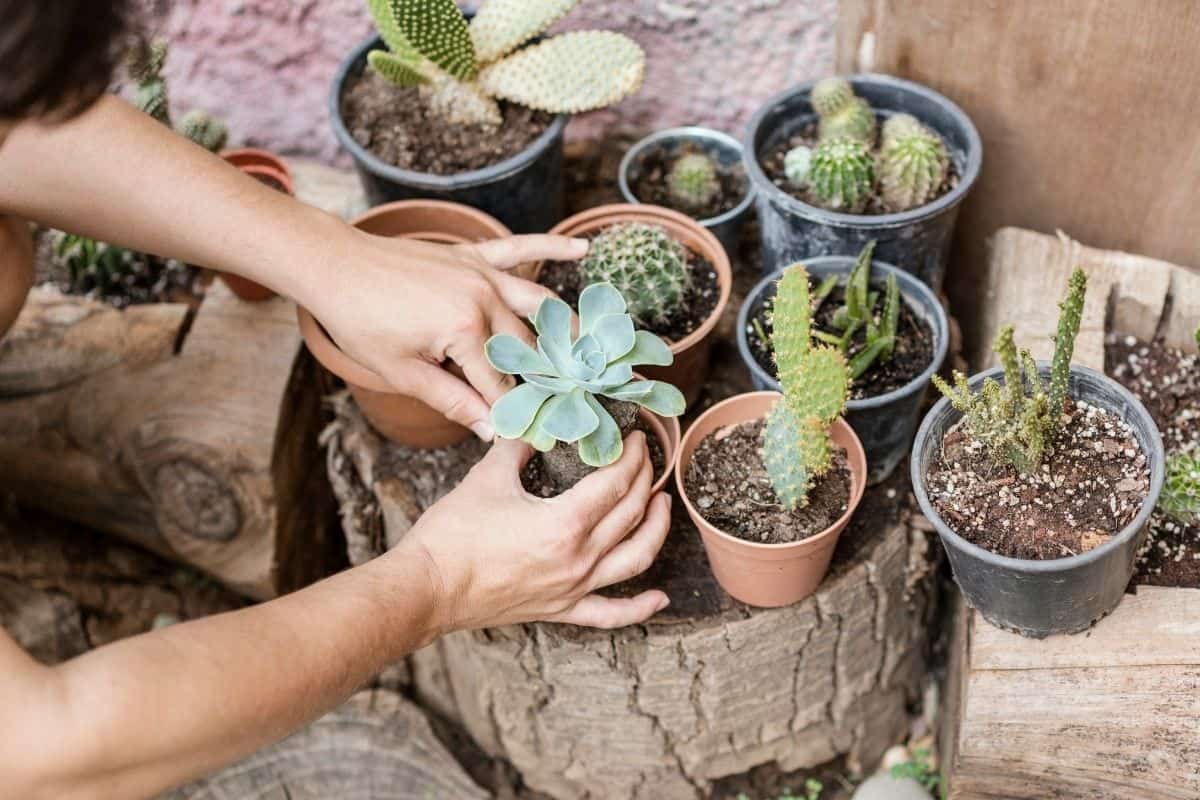
Though we’ve mainly been discussing soil for planting succulents and cacti in containers, these same concepts apply to your outdoor garden as well.
If you live in a climate that allows for succulents and cacti to be grown outdoors, it’s likely that the dirt around your home is adequate for growing these plants anyway. However, if you want to give your outdoor garden a boost and ensure your plants’ survival, you might consider tweaking nature’s soil recipe.
It’s worth noting than you can get away with using a less than ideal soil composition with outdoor plants simply because they dry out faster. Even if the soil contains more peat moss, coconut coir, or clay than you would like for your indoor container garden, your outdoor plants may still be able to thrive.
The reason for this is the environment in which the plants are growing. Outdoor plants typically get more sun and airflow, which will evaporate the moisture from the soil much faster.
That being said, it’s still possible to overwater outdoor plants, so you’ll need to make sure you’re following proper watering procedures. Remember, your plants will need more water in warm, sunny weather than they do on cool, overcast days.
In addition to mixing additional ingredients into the soil of your outdoor gardens or landscaping, you can also increase drainage through the structure of your garden. By building mounds, raised beds, or berms, you give gravity and the sun a better opportunity to dry out the soil.
Depending on the area you’re trying to landscape or grow your outdoor succulent garden, you may need to mix in a lot of ingredients to amend the soil. It can be incredibly expensive and labor intensive to do this, so you’ll need to be prepared for that.
In many cases, rather than fixing the soil in your outdoor spaces, it may just be easier to grow your succulents in containers. That way, you can control the soil and drainage, as well as the watering schedule. Plus, if the weather becomes unseasonably hot or cold, you can simply bring your plants indoors to prevent damage.
Do I need to sterilize my soil?
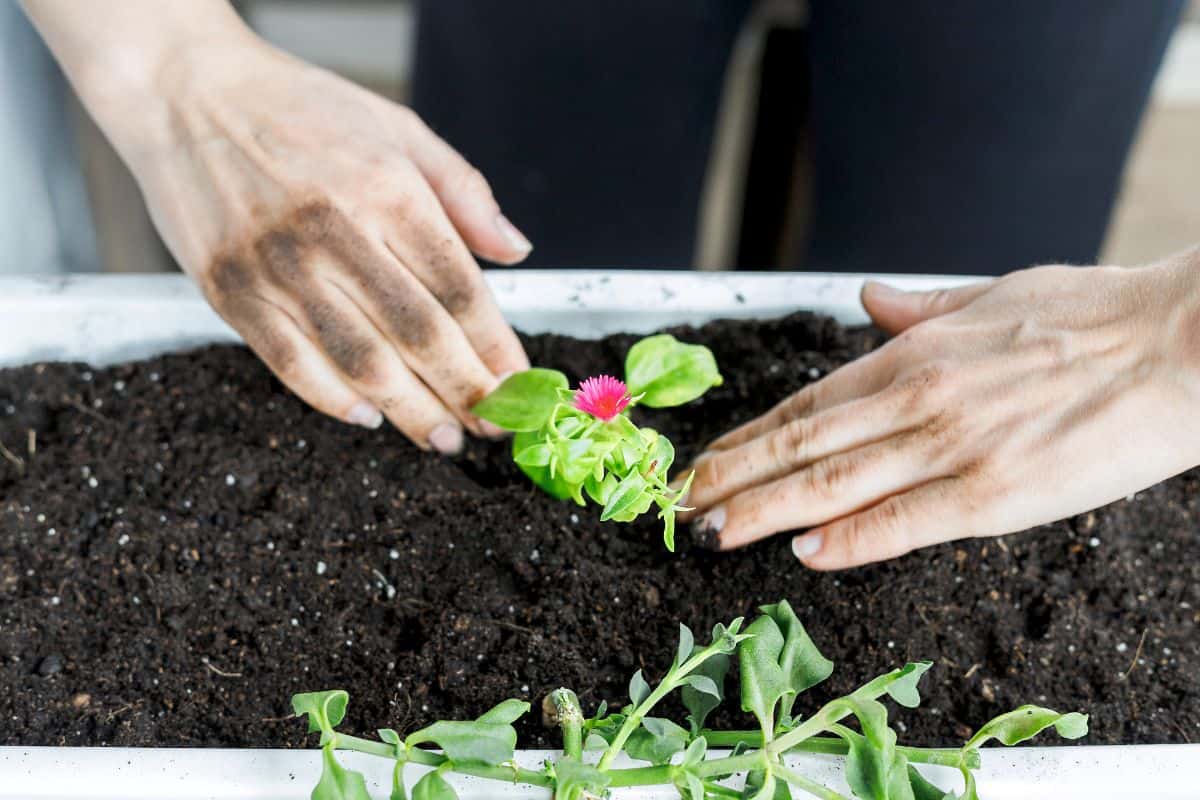
You may have heard about sterilizing soil before using it to plant succulents and cacti in. Though it may sound like a matter for large nurseries and agricultural businesses, it is appropriate for the average gardener to use in some situations.
So, why sterilize your soil? Well, that part is relatively obvious. As we mentioned before, soil is full of a variety of living organisms. Though many of these organisms are beneficial to your plants, some are not.
There are many types of bacteria, fungi, and insects that can be harmful and even deadly to succulents and cacti. There are also certain types of plants, such as weeds, that can choke out the plants you want and leave you with the plants you don’t want.
If you’ve dealt with any of these problems, you probably understand that they aren’t always easy to get rid of either. Once you do get rid of them, you may lose trust in the average bag of dirt. So, to give in to your trust issues and give your plants the best chance at survival, you might want to consider planting them in sterilized soil.
Your local nursery or garden center should sell sterilized soil, as will your favorite online retailer. You can also make it at home if you’re more of the DIY type.
There are several ways to go about this. It all depends on how much soil you need to sterilize. If you’re sterilizing a lot of soil, your best bet is to use the sun.
As you’ve heard before, the sun’s UV rays do an excellent job of killing bacteria and pathogens. This concept applies to soil surfaces too. To sterilize your soil in the sun, you’ll need somewhere that you can spread your soil out in a thin layer. A tarp or plastic sheet works well.
The thin layer is essential as it allows the sun’s rays to reach all parts of the soil. There’s no point in sterilizing the top layer of your soil and leaving the bottom layer untouched.
The one drawback to using the sun to sterilize your soil is that it does leave your soil exposed to the elements. This means your soil could potentially become reinfected with bacteria, fungi, and pests. It could also be washed away by a heavy rainstorm.
Covering your soil with a layer of clear plastic will protect it from the elements, but plastic sheeting can be damaged by animals and wind, so you’ll need to keep a close eye on your sterilization setup.
Most gardeners who use this method recommend leaving the soil exposed to sunlight for anywhere between four and ten weeks. The exact timeline will depend on temperatures and the amount of sunshine during that timeframe.
If you have only a small amount of soil to sterilize, you can also use steam or heat to kill any pathogens, pests, and weed seeds that may be present.
If you’d like to try sterilizing your soil with steam, it’s recommended to use a pressure cooker to do so. If you don’t have a pressure cooker, you can also use a regular cooking pot. Pressure cookers are generally easier to use though.
When steaming your soil, it’s important to remember to keep your trays of soil suspended above the water rather than submerged. You want the steam to penetrate the soil, but you don’t need it to get wet.
It’s also helpful to cover your trays of soil with foil to make sure they don’t make a mess of your pot or pressure cooker. Be sure to place the foil on the trays loosely so the steam can reach the soil.
If you’d prefer to use dry heat rather than steam, you can always use your kitchen oven to sterilize your soil. As with steaming, using an oven-safe container covered in foil will give you the best results.
You can also microwave your soil, which is a similar process, but without the foil coverings. Instead, you want to opt for microwave-safe lids or even plastic wrap, whichever you prefer.
You should be aware that baking or microwaving your soil in your home might result in some pretty unpleasant odors, so don’t plan on hosting any house parties the evening after sterilizing soil in your oven or microwave.
For more information on sterilizing soil, read our guide here.
I know we made a big deal about the dirt we put these guys in, but it doesn’t have to be difficult. A little research into the specific needs of your succulents and cacti and a little DIY will help your succulent garden to flourish. Do you have any tips about soils for succulents? Tell us below!
You can also visit Succulent Alley to learn more about the best soil for succulents in pots.
You Might Also Like:


Succy
You don't have to post this but just wanted to let you know the difference in dirt and soil. You sweep dirt under a rug and put soil in your planters. Soil is any growing medium that holds roots in place.
Miracle Grow is no miracle, it contains peat which becomes hydrophobic when dry and hold too much moisture when wet.
Also, you can grow in pure grit so the need for organic matter is invalid.
Oh, and lastly, pebbles at the bottom of a planter is one of the worst things you can do. It promotes rot and gives the roots less room to grow (since the only thing the pebbles do is take up space so you're essentially just using less soil) If you have a well draining mix, you don't need anything extra.
Hope this helps! Have a "succy" day!
Carmine
Hey Succy,
Interesting take on dirt versus soil... although the definition is that soil has organic matter while dirt doesn't. So growing in grit wouldn't really be soil 😉
And the Miracle Gro Succulent Soil omits peat, so it is acceptable for use with succulents.
When growing in pure grit you have to use additional fertilizer to get the requisite nutrients, which increases the chance of "burning" your plants through over-fertilization. That's why we use soil.
You are right about the pebbles in the bottom of pots though! Not sure how that got past the filter, I'll edit it immediately.
Have a good day!
Succy
Thanks for the reply.
Definition of soil: A place or condition favorable to growth. Can be organic or inorganic. 😉 Grit = soil
But yeah, it's splitting hairs, just sounds more professional to say soil rather than dirt, especially in a nice blog such as yours.
Miracale grow most certainly has peat. "This product is formulated from processed forest products, SPHAGNUM PEAT MOSS, sand, perlite, fertilizer, and a wetting agent."
Your chances of burning your plants through over-fertilization is far greater with a growing medium such as miracle grow. Speaking from experience, I have never once burned a plant grown completely gritty.
Thanks for fixing the pebble thing, your other post on the topic is good.
Have a great day too!
Elizabeth
Hi!
A friend of mine has convinced me to work with a mix of coco coir, Turface, pumice and grit. I'm wondering what your views of these materials are.
Thanks!
Elizabeth
Patrick Grubbs
All of those sound great, although I'd skip the coir. It's purpose it to retain water, which is generally what you want to avoid with succulents. Replace it with some regular potting soil for a very nice, well draining cactus soil. Or just use the other materials for a gritty mix!
Puffers
So Miracle Grow for Succlents is safe. Can I put moss of pebbles around succlents after planting to cover dirt?
Patrick Grubbs
Yes, it's safe. It's not an ideal mixture, though, because it contains bits of peat moss.
You shouldn't put any moss around succulents because it holds water and keeps them wet longer. Pebbles are fine as topdressing.
Nyit
I wanted to turn my current flower bed (about 5'×4') into a succulent garden. I plan to loosen up about 4" deep of the existing dirt and add appropriate amount of turface, coarse sand and mix them up really well. Would that work?
Patrick Grubbs
I would probably go a bit deeper, at least 6 inches. Especially if your native soil is known to be rich in clay or silt.
Leyla
Hi Patrick!
Greetings from Istanbul! I stumbled upon your site while looking for some beginner succulent care info and congrats on a job well done! Very useful and clear info so I will spend more time in the future studying your website.
I have a question about the soil mix though: would it be ok to use pumice instead of gravel? So 2 parts soil, 1 part perlite and 1 part pumice stone??
Thanks in advance for your time.
Leyla.
Patrick Grubbs
Hey Leyla, I'm glad you're finding it useful!
Yeah, pumice is an acceptable substitute. It is very similar to perlite, so it doesn't exactly replace the gravel, but that's alright.
Barham hughes
The top growers these days use either akadama. Or pumice only. They have been proven by the Japanese top growers do all that is required .
Hold the exact among of water and nutrients and nutrients as does akadama. Both are volcanic
The problem is some cost thousands of pounds but I use both and the results are tops. The only little snag is every 3/4watering need small amount of fertiliser but it's worth it.
Happy growing.
Graham
Patrick Grubbs
Yeah, I am familiar with akadama but that price tag is really killer. I know it's important for bonsai, but haven't heard of it being used for succulents specifically. There are other gritty mixes, like Bonsai Jack, which are extremely effective and much more affordable.
Thanks for the insight, though!
Graham hughes
Is
The plants cost all lot of money. Not the materials.
Sorry
Arthur
Thanks for sharing about succulent soil. It educates me a lot about it. Good thing that I can apply what I read in this blog in my garden. Keep sharing more blogs like this.
Victoria
Hello,
I'm just wondering if mixing top soil and gravel is sufficient for growing most succulents in? Or would potting soil mixed with perlite/gravel be better?
Thanks